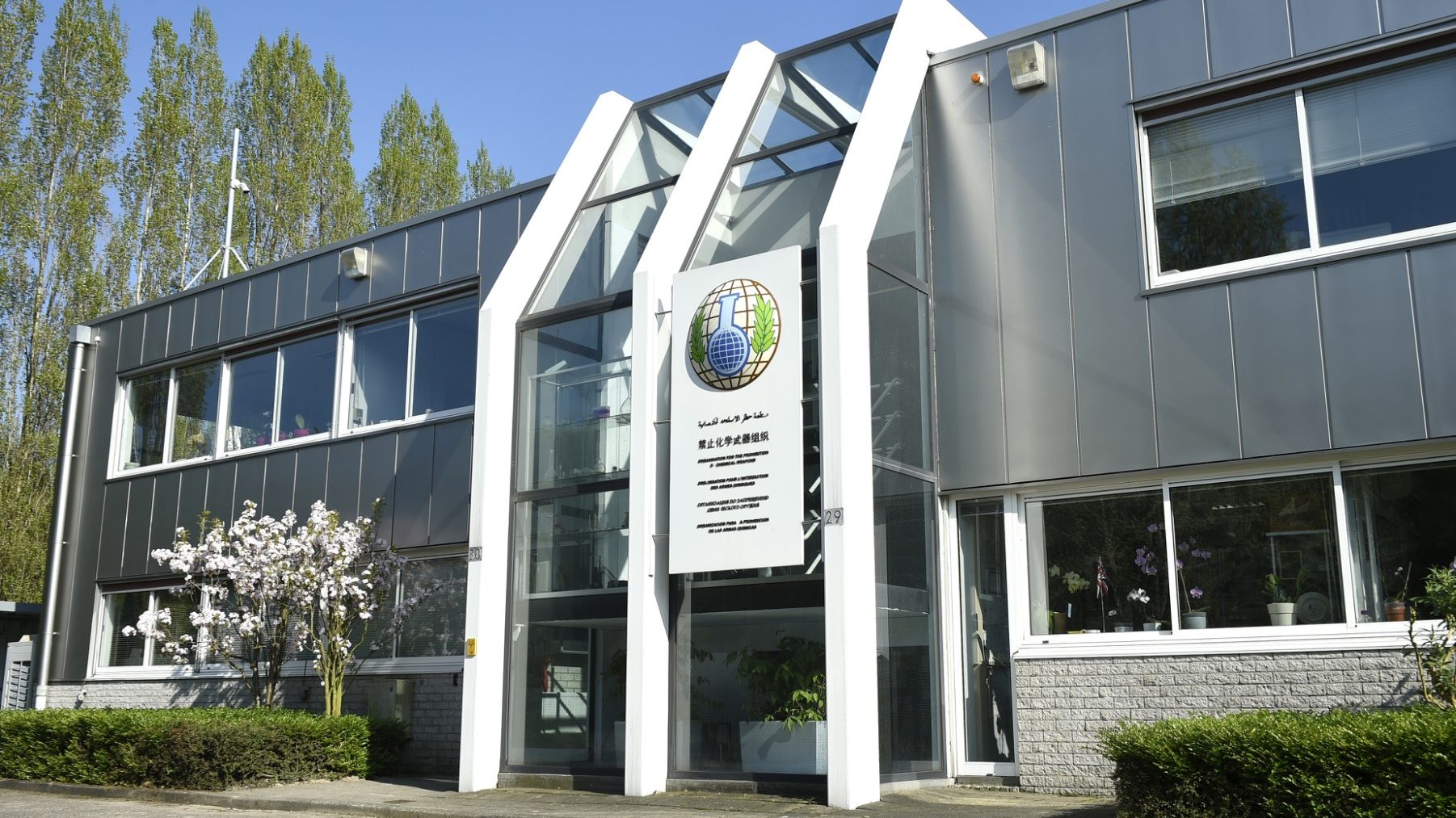THE HAGUE, Netherlands—1 February 2022—The Fact-Finding Mission (FFM) of the Organisation for the Prohibition of Chemical Weapons (OPCW), issued Monday its report on the FFM’s investigation regarding incidents of alleged use of toxic chemicals as a weapon in Kafr Zeita, Governorate of Hama, Syrian Arab Republic, on 1 October 2016.
On 2 October 2016, open sources broadcasted reports of the alleged use of toxic chemicals as a weapon in Kafr Zeita on 1 October 2016. The reported incident involved two industrial chlorine cylinder “barrels” containing toxic gas near a field hospital. Approximately 20 individuals suffered from suffocation and breathing difficulties.
The FFM obtained information regarding the 1 October 2016 incident in Kafr Zeita through several activities and from different sources. The FFM was able to conduct interviews with witnesses and obtain digital evidence.
The FFM additionally obtained one of the industrial chlorine cylinders retrieved from the incident location in Kafr Zeita. The FFM observed that the industrial cylinder was engraved with markings reading “CL2”, the molecular formula for chlorine gas.
Off-site chemical analyses performed by independent laboratories part of the OPCW Designated Laboratories network, a mechanical study, and digital simulations were conducted to assess the damage visible on the cylinder. The FFM was able to positively link the chlorine cylinder to the 1 October 2016 incident. The FFM found that the cylinder ruptured as a result of mechanical force and released a toxic irritant substance that affects the respiratory system and mucus membranes.
The report concluded there are reasonable grounds to believe that the industrial chlorine cylinder was used as a weapon.
The FFM report was shared with States Parties to the Chemical Weapons Convention. The report will also be transmitted to the United Nations Security Council through the UN Secretary-General.
Background
In response to persistent allegations of chemical weapon attacks in Syria, the OPCW Fact-Finding Mission (FFM) was set up in 2014 with an on-going mandate “to establish facts surrounding allegations of the use of toxic chemicals, reportedly chlorine, for hostile purposes in the Syrian Arab Republic”.
The FFM’s mandate is to determine whether chemical weapons or toxic chemicals as weapons have been used in Syria. It does not include identifying who is responsible for alleged attacks. The FFM is required to study available information relating to allegations of use of chemical weapons in Syria, including information provided by the Syrian Arab Republic and others. The FFM employs investigative methods to determine if chemical weapons have been used. It interviews witnesses and obtains environmental and bio-medical samples and physical evidence for analysis.
Following the Decision on “Addressing the threat from chemical weapons use”, adopted by the Conference of the States Parties at its Special Session in June 2018, the Technical Secretariat has put in place arrangements to identify the perpetrators of the use of chemical weapons in the Syrian Arab Republic.
The FFM has previously determined that the use of chlorine, sulfur mustard, and sarin as chemical weapons took place in other incidents in the Syrian Arab Republic.
The OPCW operates according to a strict confidentiality regime, which governs the operations of the Organisation, protects the integrity of its investigations, ensures the security of its technical experts, and determines what information can be made public.
As the implementing body for the Chemical Weapons Convention, the OPCW, with its 193 Member States, oversees the global endeavour to permanently eliminate chemical weapons. Since the Convention’s entry into force in 1997, it is the most successful disarmament treaty eliminating an entire class of weapons of mass destruction.
Over 99% of all declared chemical weapon stockpiles have been destroyed under OPCW verification. For its extensive efforts in eliminating chemical weapons, the OPCW received the 2013 Nobel Peace Prize.


